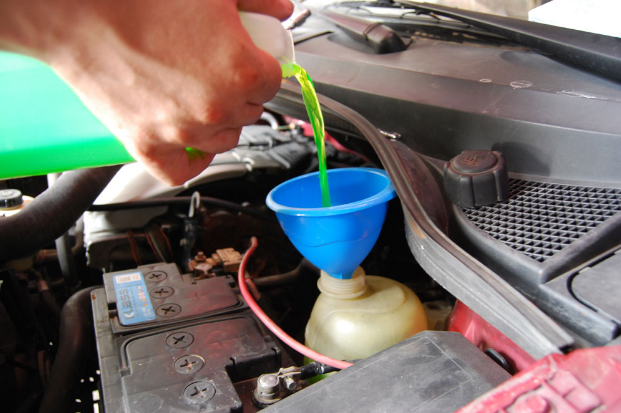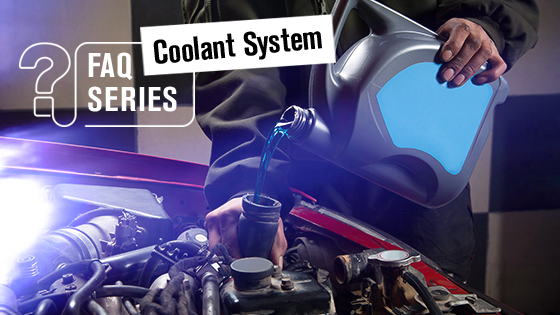The vehicle’s coolant (or sometimes referred to as cooling) system is put in place to prevent the engine from overheating. It also helps to regulate the temperature inside the passenger compartment. Here are a few main components of the coolant system and their specific functions:
Radiator
The radiator is the main component in the coolant system and is responsible for preventing the car engine from overheating. The radiator is filled with coolant fluid (also referred to as cooling) that runs through the radiator’s inner core and transfers its heat to to a metal cooling fan. The radiator fan provides air that dissolves that heat from the coolant. When refilling your radiator with this fluid, make sure you are using the proper fluid for your vehicle.
Radiator Hoses and Water Pump
Radiator hoses link to the radiator and the engine. The coolant fluid flows through the radiator hoses to and from the engine. The water pump circulates the coolant fluid around the system and directly into the engine block.
Thermostat
The thermostat is located in the engine and is there to keep the coolant and engine at a proper operating temperature at all times.
Temperature Gauge
The temperature gauge keeps an eye on the variable levels of electrical resistance from a sensor located on the engine block as the engine heats up.
Radiator Cap
The radiator cap is very important in the coolant system. The radiator cap closes the filling hole that the coolant is dispensed into and ultimately is designed to seal the coolant system to a specific pressure. If the radiator cap is not sealed then the coolant system cannot function properly.

This system is made up of a lot of intricate parts and functions that combine to make sure that your vehicle and engine is getting the proper heat exposure. If you are needing to get your coolant checked make sure to schedule an appointment at one of McCarthy Auto Group’s service centers today!






No Comments